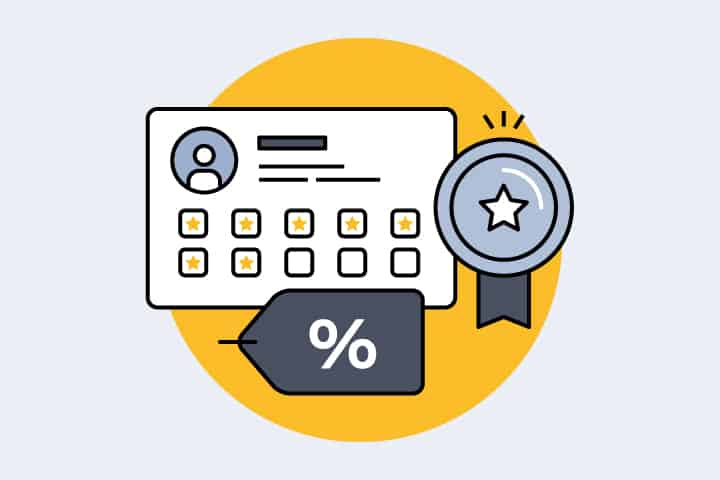Understanding who your ideal customers are forms the bedrock of any successful marketing strategy and business growth. But why is this identification so crucial, and how do the approaches differ between B2C and B2B markets? Let’s dive into these fundamentals, keeping in mind our aim to keep things light, informative, and, dare I say, a tad fun for those of us just starting on this journey.
The Importance of Knowing Your Best Customers

Imagine you’re throwing a party. Would you rather send out a general invitation to the entire neighborhood, or would you prefer to invite guests who you know will appreciate the theme, contribute to the vibe, and ultimately make the party memorable? Identifying your ideal customers is akin to crafting that perfect guest list for your business’s party.
The significance of this process cannot be overstated. It’s not just about who will buy from you but understanding the “why” behind their purchases. This insight allows you to tailor your marketing efforts, ensuring they resonate deeply with the needs, desires, and challenges of your target audience. According to a study by McKinsey, companies that excel in personalizing their outreach to customers can generate a whopping 40% more revenue than their less-personalized counterparts. Personalization, as it turns out, is not just a buzzword but a proven strategy for business development.
B2C vs. B2B Customer Characteristics
Now, let’s chat about the differences between B2C (Business-to-Consumer) and B2B (Business-to-Business) markets. Each has its unique characteristics and requires a distinct approach to identification and engagement.
- B2C Characteristics:
- Emotional Decision-Making: B2C customers often make purchase decisions based on emotion and personal desire.
- Shorter Sales Cycles: The journey from discovery to purchase is typically quicker, sometimes instantaneous.
- Wider Audience: B2C businesses usually target a broader audience with varied demographics.
- B2B Characteristics:
- Logical Decision-Making: B2B buyers are driven by logic, efficiency, and ROI for their companies.
- Longer Sales Cycles: The process involves more research, discussions, and approvals, leading to longer sales cycles.
- Niche Markets: B2B companies often cater to specific industries or professional roles, making their target market more defined.
Understanding these distinctions is crucial for crafting marketing strategies that hit the mark. For instance, while a B2C campaign might thrive on emotional storytelling and broad appeal, a B2B approach would benefit from detailed case studies, industry insights, and value propositions that speak directly to business needs.
Tailoring Your Approach
How do we use this knowledge to our advantage? Here are a few tips:
- For B2C:
- Leverage social media platforms to create emotional and engaging content that resonates with your audience’s personal interests.
- Use targeted ads and promotions to capitalize on impulse buying behaviors.
- For B2B:
- Develop in-depth content like whitepapers, webinars, and case studies that address specific industry challenges.
- Focus on building relationships through LinkedIn and professional networks, emphasizing the long-term value and reliability of your products or services.
Crafting Compelling Customer Personas
Creating customer personas is not just an exercise in creativity; it’s a strategy to deeply understand and connect with your target audience. Whether you’re a marketing newbie or looking to refine your approach, the development of detailed customer personas can significantly impact your marketing and product development efforts. So, how do we go about this? Let’s dive in.
Steps for Developing Detailed Personas
Start with the Basics: Begin by outlining the basic demographics of your persona. Are they in a specific age range? What is their occupation? Where do they live? While these may seem like simple questions, they form the foundation of understanding who your customers are.
Dig Deeper with Psychographics: Once you have the demographics nailed down, it’s time to delve into the psychographics. What are their hobbies? What values do they hold dear? Understanding these elements can help you craft messages that resonate on a personal level.
Create Both Positive and Negative Personas: Not all customers are created equal. While positive personas represent your ideal customers, negative personas are equally important. They help you identify who you’re not targeting, ensuring your marketing efforts are more focused and efficient.
- Why bother with negative personas? They prevent resource wastage on uninterested segments and improve campaign ROI.
Incorporate Real Data and Examples: Use data from your existing customer base to inform your personas. Look at purchase histories, customer feedback, and social media behavior. For instance, a study by HubSpot revealed that using personas can make websites 2-5 times more effective and easier to use for targeted users. Real-world examples and case studies add authenticity and relatability to your personas.
Refining Personas with Data and Feedback
Creating personas is not a one-and-done task. As markets evolve, so should your personas. Here’s how to keep them fresh and relevant:
Leverage Customer Data: Dive into your analytics regularly. Look for patterns in purchasing behavior, website navigation, and engagement with your content. This data provides insights into what your customers care about and how they interact with your brand.
Gather Customer Feedback: Direct feedback from customer surveys, interviews, and feedback forms is gold. It offers a glimpse into the customer’s mind, revealing what they love about your product and what could be better.
Conduct Market Research: Stay abreast of industry trends and shifts in consumer behavior. Tools like Google Trends can help you spot emerging interests that could affect your personas.
Iterate and Evolve: Use the collected data and feedback to refine your personas. Maybe your “Tech-Savvy Tim” persona is now interested in sustainability. Or perhaps there’s a new demographic showing interest in your product. Adjust your personas to reflect these discoveries.
Advanced Strategies for Customer Identification
Identifying the right customers is akin to solving a complex puzzle. But worry not! By employing advanced strategies and a bit of savvy, you can piece together the perfect customer profile for your business. Let’s dive into some sophisticated tactics that can propel your customer identification process to new heights.
Analyzing Product Appeal and Business Goals
First things first, understanding the unique value of your product or service is crucial. What sets it apart from the competition? Is it the cost, quality, innovation, or customer service? Pinpointing this unique selling proposition (USP) is the first step in identifying your ideal customer. But, it doesn’t stop there. Aligning your product’s appeal with your overarching business goals is the key to unlocking true customer-centric strategy.
Consider this: if your product is a high-end, innovative tech gadget, your ideal customers are likely to be tech enthusiasts who value cutting-edge technology and have the disposable income to afford it. Aligning this insight with your business goal of becoming a leader in tech innovation not only sharpens your focus but also directs your marketing efforts to the right audience.
Real-World Application: Apple’s marketing strategy is a masterclass in aligning product appeal with business goals. By focusing on innovation, design, and functionality, Apple targets consumers who appreciate these values, thereby ensuring their products resonate with the right audience.
Utilizing Market Segmentation
Diving deeper into customer identification involves the art and science of market segmentation. Breaking down a broad market into smaller, more manageable segments can significantly enhance the effectiveness of your marketing strategies. Here’s a breakdown of the main types of segmentation:
- Demographic Segmentation: This involves categorizing the market based on age, gender, income, education, and occupation. It’s straightforward and often the first step in segmentation. For example, luxury brands may target high-income individuals, while educational tech tools might focus on students and educators.
- Psychographic Segmentation: This delves into the psychological attributes of consumers, such as values, beliefs, lifestyles, and personality traits. A fitness brand, for instance, might target individuals who value health and wellness, irrespective of their age or income.
- Behavioral Segmentation: This looks at the behavior of consumers, including their purchasing habits, product usage, and brand interactions. For instance, a company might target customers who are frequent online shoppers or those who show loyalty to certain brands.
Incorporating these segmentation strategies allows you to tailor your marketing efforts more precisely, ensuring that you’re speaking directly to the needs, wants, and behaviors of your target audience.
Example: Netflix excels at behavioral segmentation, using viewing habits to recommend shows and movies, thereby enhancing user experience and engagement.
Technological Innovations in Customer Insight

In the fast-paced digital age, technology plays a pivotal role in understanding customers like never before. Businesses are increasingly turning to innovative tech solutions to gain a competitive edge. Let’s explore how big data, AI, and advanced analytics are revolutionizing customer insights.
Embracing Big Data and AI for Predictive Analysis
Imagine being able to predict your customers’ next move before they even make it. Sounds like a marketer’s dream, right? Well, with big data and AI, this is rapidly becoming a reality. These technologies are at the forefront of transforming customer insight strategies by predicting behavior, identifying trends, and uncovering new segments.
- Big Data allows businesses to collect vast amounts of information from a variety of sources, including social media, website interactions, and purchase histories.
- AI and Machine Learning algorithms then analyze this data to identify patterns and predict future customer actions.
Example: Retail giants like Amazon use predictive analysis to recommend products to customers based on their browsing and purchasing history. This not only enhances the shopping experience but also significantly boosts sales.
According to a study by McKinsey, companies that leverage customer behavior insights outperform peers by 85% in sales growth and more than 25% in gross margin. This staggering statistic underscores the potential of big data and AI in driving business success.
Personalization Through Advanced Analytics
The power of technology extends beyond prediction; it enables unprecedented levels of personalization. Advanced analytics turn raw data into actionable insights, allowing businesses to craft personalized marketing campaigns, recommend products, and tailor customer experiences.
- Segmentation: Analytics can segment customers into detailed groups based on their behavior, preferences, and demographics.
- Customization: Businesses can use these insights to create highly personalized content, offers, and recommendations.
Real-World Success: Spotify’s Discover Weekly feature is a prime example of personalization at its best. By analyzing listening habits, Spotify provides users with a personalized playlist every week, enhancing user engagement and loyalty.
Here are some ways businesses can implement personalization:
- Tailored email marketing campaigns that resonate with individual preferences.
- Personalized product recommendations on e-commerce sites for example via product tour software” via product tour software or a product discovery tool.
- Customized content delivery based on user behavior and interests.
Expanding Your Customer Base
Growing your customer base is crucial for the longevity and success of your business. But where do you start? With the right tools and engagement strategies, you can uncover new ideal customers and effectively connect with them. Let’s explore how.
Leveraging Tools for Identifying Potential Customers
In today’s digital age, understanding who your potential customers are and where to find them has become more manageable thanks to a slew of innovative tools and technologies. Here’s a look at some of the most effective ones:
- CRM Platforms: Customer Relationship Management (CRM) systems are not just for managing existing customers. Advanced CRM platforms like Salesforce, Zendesk, HubSpot, and Knock CRM offer analytics and lead scoring features that help identify potential customers based on their interactions with your brand.
- Analytics Tools: Google Analytics and similar platforms provide insights into website visitors’ behavior, allowing businesses to pinpoint areas of interest and potential new markets.
- Social Media Monitoring Tools: Platforms like Hootsuite and Sprout Social enable businesses to listen to conversations about their brand, competitors, and industry trends, uncovering potential customers in the process.
By integrating these tools into your marketing strategy, you can gather data-driven insights to identify and target new customer segments effectively.
Engagement Strategies for Growth
Once you’ve identified potential customers, the next step is to engage them. Here are some actionable strategies for growing your customer base through engagement:
Social Media Engagement: It’s all about building relationships. Engaging with users through comments, direct messages, and interactive content can turn followers into customers. Platforms like Instagram and Twitter are perfect for this type of engagement.
Content Marketing: Providing value through content is a powerful way to attract new customers. This can include:
- Blog posts that address common questions or concerns.
- How-to guides related to your product or service.
- Engaging videos that highlight your brand’s personality.
Example/Case Study: For instance, a comprehensive blog series delving into the intricate world of wedding/engagement rings, addressing questions about styles, materials, and trends. Additionally, how-to guides could explore the proper care and maintenance of wedding rings, offering valuable insights to potential customers. Engaging videos might showcase the craftsmanship behind each unique engagement ring, providing a glimpse into the artistry and attention to detail that sets your brand apart.
Personalized Communication: Tailoring your messages to meet the specific needs and interests of your audience can significantly boost engagement. Email marketing tools like Mailchimp allow for segmentation and personalization, making it easier to send relevant content to different subsets of your audience.
Examples and Stats:
- According to a report by DemandGen, personalized emails improve click-through rates by 14% and conversion rates by 10%.
- A case study by MarketingSherpa showed how a simple personalized email campaign led to a 208% higher conversion rate for a B2B company.
Nurturing and Retaining Your Ideal Customers
In a marketplace crowded with options, retaining your ideal customers is just as crucial as finding them. But how do you transform a one-time buyer into a loyal advocate for your brand? Let’s delve into strategies for building lasting customer relationships and creating a feedback loop that fosters continuous improvement.
Building and Maintaining Customer Relationships
The foundation of any lasting relationship is consistent, positive engagement. Here are some key strategies to ensure your customers feel valued and connected to your brand:
- Outstanding Customer Service: This is non-negotiable. Quick, empathetic responses to inquiries or problems can turn a potentially negative experience into a positive one. Remember, a satisfied customer tells three friends; a dissatisfied customer tells Google.
- Loyalty Programs: Reward your customers for their repeat business. Whether it’s points, discounts, or exclusive access, loyalty programs make customers feel appreciated and encourage continued engagement.
- Consistent Engagement: Regular communication through email newsletters, social media, and personalized outreach keeps your brand top of mind. This isn’t just about sales pitches but providing value through tips, insights, and relevant content.
Example: Starbucks’ loyalty program not only rewards customers with free drinks and food but also personalizes offers based on their purchase history, enhancing the feeling of exclusivity and appreciation.
The Cycle of Feedback and Improvement
Feedback is the compass that guides the improvement of your products, courier service, and overall customer experience. Here’s how to create a constructive feedback lo
- Encourage Feedback: Make it easy for customers to provide feedback through multiple channels. Whether it’s a survey, a comment box on your website, or a direct message on social media, open lines of communication show that you value their opinions.
- Act on Feedback: Listening is only half the battle; acting on feedback is where the real work begins. Whether it’s tweaking a product, adjusting a service, or making a policy more customer-friendly, show that you’re responsive to your customers’ needs.
- Monitor Satisfaction: Use tools like Net Promoter Score surveys (NPS surveys) to gauge customer satisfaction over time. This can help identify areas for improvement and track how changes impact customer perception.
Stats and Sources: According to a study by Bain & Company, increasing customer retention rates by just 5% increases profits by 25% to 95%. This statistic underscores the importance of nurturing and retaining customers for long-term success.
Holger Sindbaek, the founder of Online Solitaire, says, “We use feedback as our compass for identifying and nurturing our ideal customers. By continuously listening to players and acting on their insights, we tailor the experience to meet their evolving needs. This strengthens relationships and helps us fine-tune our product to attract and retain the right audience. The key is showing players that their input directly impacts the game, creating a loop where their trust deepens with every improvement we make.
Future-Proofing Your Customer Identification Strategy

In an era of rapid change, staying ahead in the game of customer identification is not just beneficial—it’s essential. But how can businesses ensure that their strategies remain effective in the long run? By embracing continuous learning, adaptation, and strategic planning, companies can set themselves up for sustained success. Let’s explore how.
Staying Ahead with Continuous Learning and Adaptation
The landscape of customer needs and market trends is always shifting. To keep up, businesses must adopt a mindset of continuous learning and flexibility. Here’s how you can ensure your customer identification strategy stays ahead of the curve:
- Embrace Market Research: Regularly invest time and resources in studying market trends, emerging customer needs, and competitor strategies. Tools like Google Trends and social listening platforms can provide invaluable insights.
- Adopt a Test-and-Learn Approach: Don’t be afraid to experiment with new strategies for identifying and reaching potential customers. Use A/B testing on your marketing campaigns to understand what works best and why.
- Stay Technologically Savvy: Technology is a key driver of change in customer behavior. Keeping abreast of the latest digital marketing tools, B2B CRM software, and data analytics technologies can provide a competitive edge.
Example: Netflix’s use of data analytics to drive content creation and recommendations is a prime example of a company that continuously learns from its user base to adapt its offerings, thereby maintaining a strong and growing customer base.
Strategic Planning for Sustained Success
The future belongs to those who plan for it. Here’s how strategic planning can solidify the future of your customer identification efforts:
- Innovate Constantly: Innovation shouldn’t be limited to products or services but should also encompass your marketing strategies and customer service approaches. Always look for new ways to engage and delight your target audience.
- Build Flexibility into Your Strategy: The ability to pivot is crucial in a fast-changing environment. Ensure your customer identification strategy includes room for adaptation based on feedback and changing market conditions.
- Focus on Long-Term Relationships: Acquiring new customers is important, but retaining them is where the real value lies. Implement strategies that foster long-term engagement, such as loyalty programs, personalized communication, and excellent customer service.
Stats and Sources: According to a Bain & Company study, a 5% increase in customer retention correlates with at least a 25% increase in profit. This highlights the importance of focusing on long-term customer relationships as part of your strategic planning.
By committing to continuous learning and strategic planning, businesses can not only adapt to the present but also anticipate future changes, ensuring their customer identification strategies remain robust and effective. So, are you ready to take the leap and future-proof your strategy? Remember, the only constant in business is change, and by staying one step ahead, you’re not just surviving; you’re thriving.

